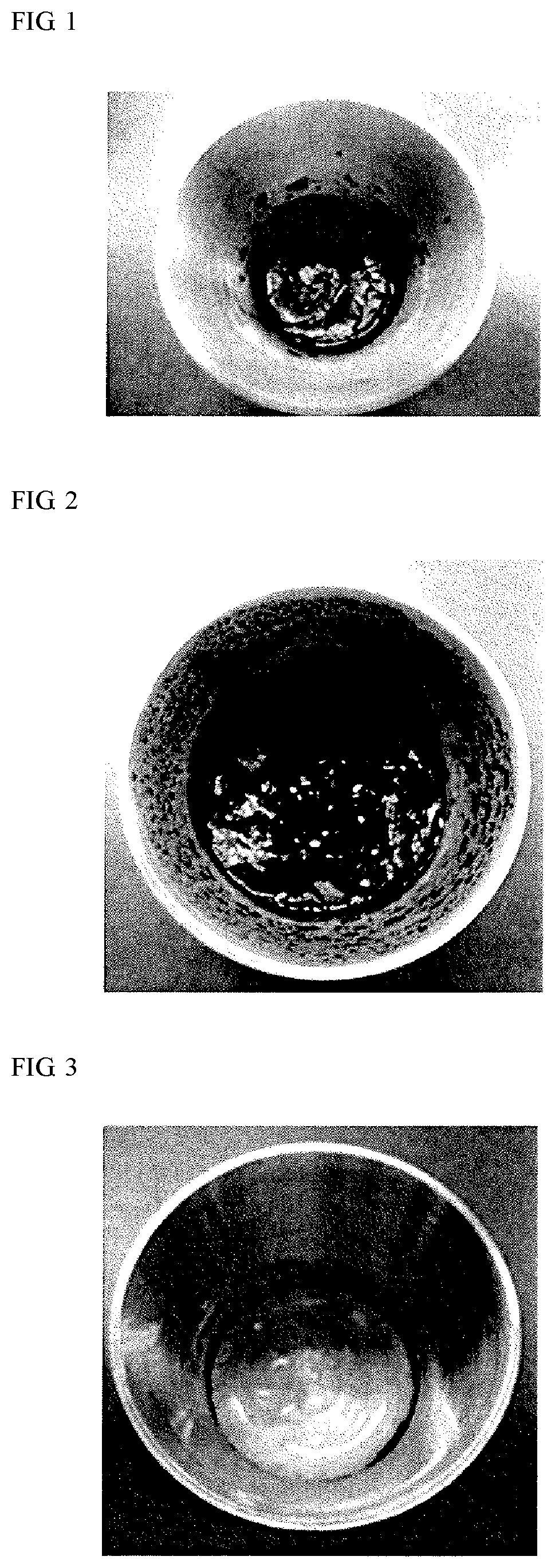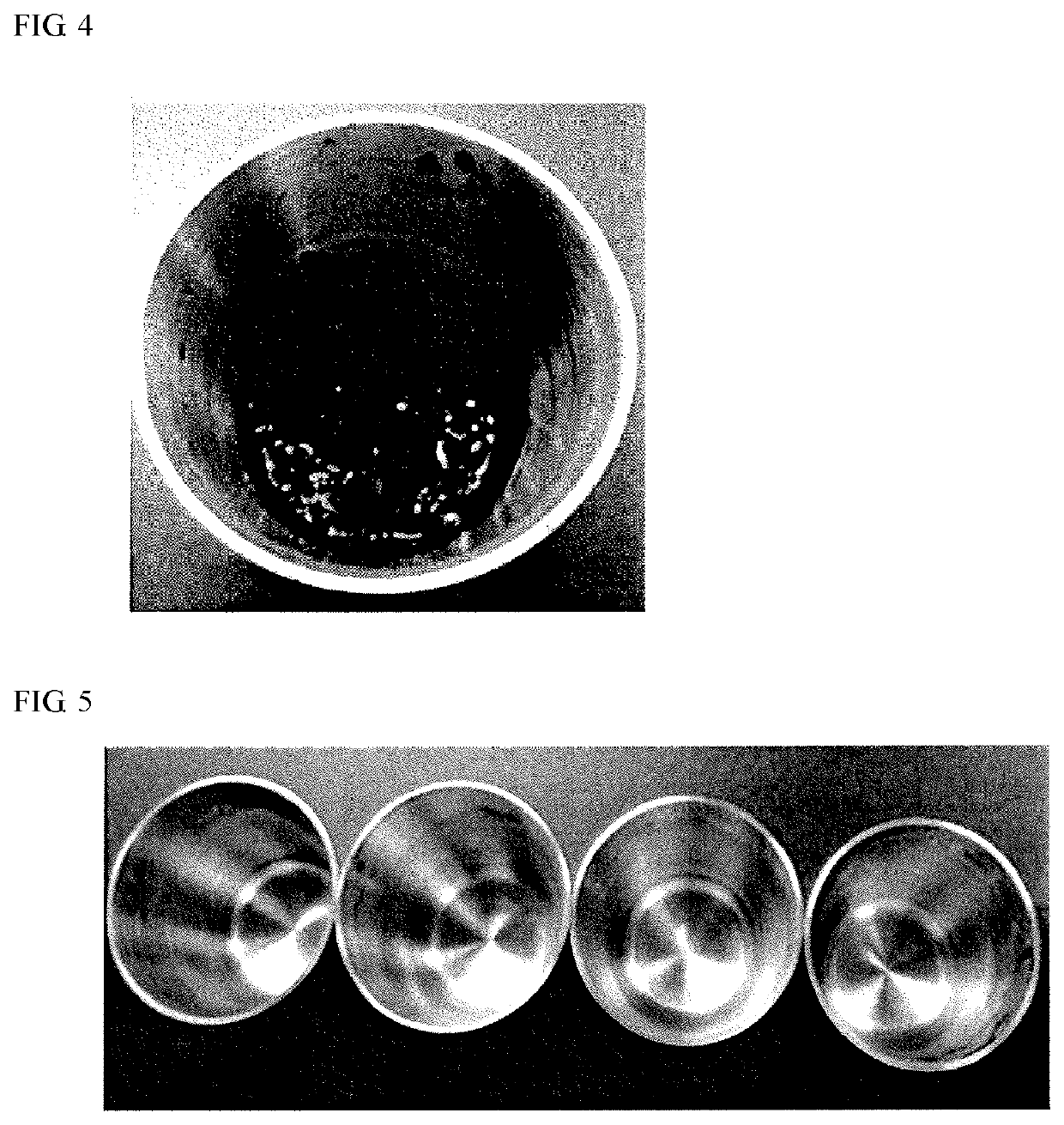5-hydroxymethyl-2-furfural production method
a technology of 5hydroxymethyl and 2 furfural, which is applied in the direction of physical/chemical process catalysts, drug compositions, extracellular fluid disorders, etc., can solve the disadvantages of 5-hmf using homogeneous acid catalysts, heterogeneous acid catalysts, etc., and achieves simple and inexpensive production, easy removal outside the system, and high production efficiency.
- Summary
- Abstract
- Description
- Claims
- Application Information
AI Technical Summary
Benefits of technology
Problems solved by technology
Method used
Image
Examples
example 1
n of 5-HMF Using Various Catalysts and Analysis
(1) Preparation of Samples
[0061]A high fructose syrup (fructose content per solid content: 95%; solid content concentration: 75.5; product name: L-95; manufactured by Nihon Shokuhin Kako Co., Ltd.) was used as a substrate carbohydrate. The substrate carbohydrate (1.4 g (carbohydrate mass)) was put in respective reaction vessels (made of stainless steel), and various catalysts were added so as to attain the amounts (ratio % with respect to the solid content of the substrate carbohydrate) indicated in Table 1. In the following Examples, the amount (%) of the catalyst to be added means the mass of the catalyst when the mass of the solid content of the carbohydrate serving as the substrate is defined as 100%. After stirring of the respective samples, the temperature of the samples was allowed to reach 130° C. in an autoclave (manufactured by Tomy Seiko Co., Ltd., BS-325), kept at a pressure of 1.7 kgf / cm2 for 3 hours, and naturally dropped ...
example 2
n of 5-HMF in the Presence of Organic Solvent and Analysis
(1) Preparation of Sample
[0075]Fructose (manufactured by Nacalai Tesque, Inc.) was used a substrate carbohydrate. The substrate carbohydrate (0.24 g) was put in a reaction container (made of glass), and 72 mg of an activated carbon catalyst (activated carbon 2 (zinc chloride activated carbon) used in Example 1) was added thereto. Isopropanol (0.8 mL) was added, and the sample was stirred. Thereafter, the temperature of the sample was allowed to reach 150° C. in an autoclave (manufactured by Tokyo Rikakikai Co., Ltd., RCH-1000, HIP-7518), kept at a pressure of 4.9 kgf / cm2 for 30 minutes, and naturally dropped to conduct a heating reaction, thereby obtaining a reaction product (Reaction Product 21). After completion of the reaction, the solution was filtered through a 0.45-μm filter (manufactured by Merck Millipore Ltd.) and a 0.22-μm filter (manufactured by Merck Millipore Ltd.). After evaporation of isopropanol, the resultant...
example 3
n of 5-HMF from Various Raw Material and Analysis Carbohydrates
(1) Preparation of Samples
[0086]Glucose (manufactured by Kanto Chemical Co., Inc.), galactose (manufactured by Nacalai Tesque, Inc.), mannose (manufactured by Wako Pure Chemical Industries, Ltd.), sucrose (manufactured by Kanto Chemical Co., Inc.), lactose (manufactured by Kanto Chemical Co., Inc.), maltose (manufactured by Kanto Chemical Co., Inc.), sorbitol (manufactured by Mitsubishi Shoji Foodtech Co., Ltd.), fructooligosaccharide (manufactured by Wako Pure Chemical Industries, Ltd.), inulin (manufactured by Fuji Nihon Seito Corporation) and corn starch (manufactured by Nihon Shokuhin Kako Co., Ltd.) were used as substrate carbohydrates. The respective substrate carbohydrates (1.0 g) were put in respective reaction containers (made of glass), and 0.3 g of an activated carbon catalyst (activated carbon 2 (zinc chloride activated carbon) used in Example 1) was added. To these, 100.0 g of distilled water was added, and ...
PUM
| Property | Measurement | Unit |
|---|---|---|
| pressure | aaaaa | aaaaa |
| temperature | aaaaa | aaaaa |
| temperature | aaaaa | aaaaa |
Abstract
Description
Claims
Application Information
 Login to View More
Login to View More - R&D
- Intellectual Property
- Life Sciences
- Materials
- Tech Scout
- Unparalleled Data Quality
- Higher Quality Content
- 60% Fewer Hallucinations
Browse by: Latest US Patents, China's latest patents, Technical Efficacy Thesaurus, Application Domain, Technology Topic, Popular Technical Reports.
© 2025 PatSnap. All rights reserved.Legal|Privacy policy|Modern Slavery Act Transparency Statement|Sitemap|About US| Contact US: help@patsnap.com


